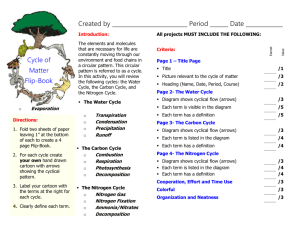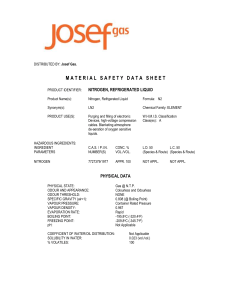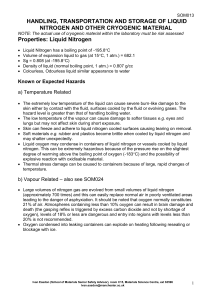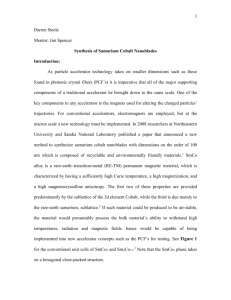LIQUID NITROGEN USE, HAMPSTEAD CAMPUS
advertisement
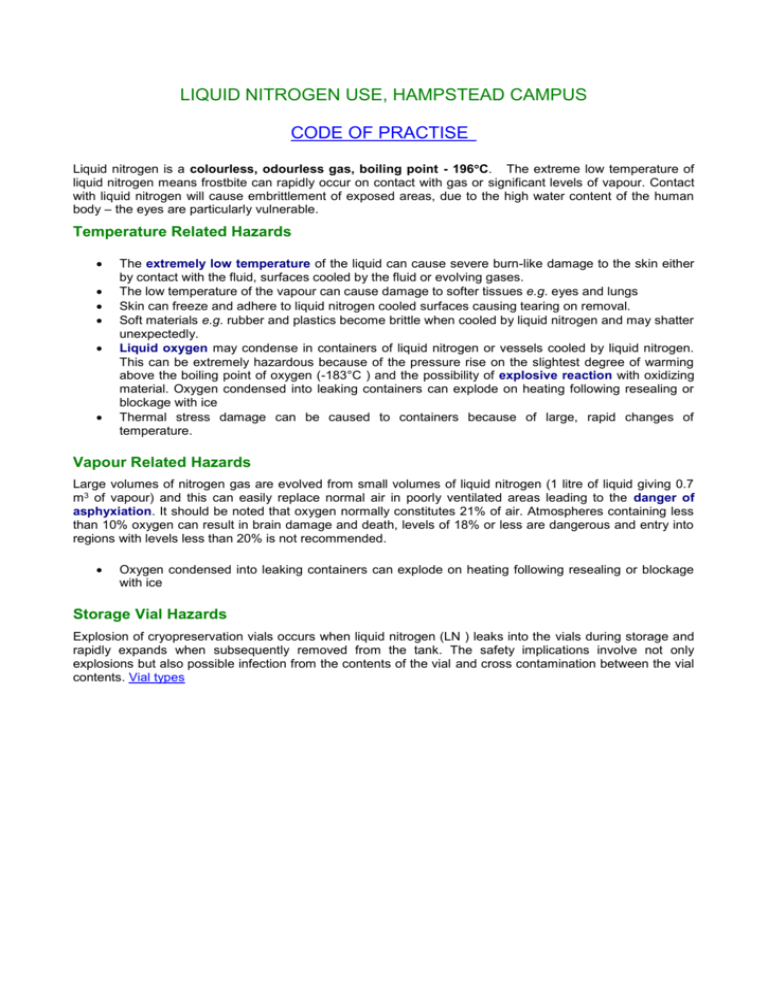
LIQUID NITROGEN USE, HAMPSTEAD CAMPUS CODE OF PRACTISE Liquid nitrogen is a colourless, odourless gas, boiling point - 196C. The extreme low temperature of liquid nitrogen means frostbite can rapidly occur on contact with gas or significant levels of vapour. Contact with liquid nitrogen will cause embrittlement of exposed areas, due to the high water content of the human body – the eyes are particularly vulnerable. Temperature Related Hazards The extremely low temperature of the liquid can cause severe burn-like damage to the skin either by contact with the fluid, surfaces cooled by the fluid or evolving gases. The low temperature of the vapour can cause damage to softer tissues e.g. eyes and lungs Skin can freeze and adhere to liquid nitrogen cooled surfaces causing tearing on removal. Soft materials e.g. rubber and plastics become brittle when cooled by liquid nitrogen and may shatter unexpectedly. Liquid oxygen may condense in containers of liquid nitrogen or vessels cooled by liquid nitrogen. This can be extremely hazardous because of the pressure rise on the slightest degree of warming above the boiling point of oxygen (-183°C ) and the possibility of explosive reaction with oxidizing material. Oxygen condensed into leaking containers can explode on heating following resealing or blockage with ice Thermal stress damage can be caused to containers because of large, rapid changes of temperature. Vapour Related Hazards Large volumes of nitrogen gas are evolved from small volumes of liquid nitrogen (1 litre of liquid giving 0.7 m3 of vapour) and this can easily replace normal air in poorly ventilated areas leading to the danger of asphyxiation. It should be noted that oxygen normally constitutes 21% of air. Atmospheres containing less than 10% oxygen can result in brain damage and death, levels of 18% or less are dangerous and entry into regions with levels less than 20% is not recommended. Oxygen condensed into leaking containers can explode on heating following resealing or blockage with ice Storage Vial Hazards Explosion of cryopreservation vials occurs when liquid nitrogen (LN ) leaks into the vials during storage and rapidly expands when subsequently removed from the tank. The safety implications involve not only explosions but also possible infection from the contents of the vial and cross contamination between the vial contents. Vial types








